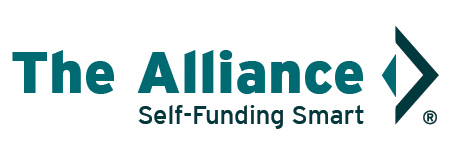The Financial Flexibility of Self-Funding During Economic Uncertainty
 By Michelle Osgood, Director of Operations/Privacy Officer
By Michelle Osgood, Director of Operations/Privacy Officer
In times of economic uncertainty, every dollar matters for employers, their employees, and their families. Rising inflation, unpredictable markets, and increasing healthcare costs have left many employers looking for ways to stretch their budgets further without sacrificing essential benefits. While fully insured health plans may seem like the safest or easiest option, they’re rarely the most cost-effective, especially when the economy becomes volatile.
Self-funded health plans are often overlooked or misunderstood, but they offer crucial financial flexibility. These plans don’t just benefit employers’ bottom lines, they help protect employees and their families from unnecessary costs, provide increased access to care, and support long-term financial sustainability. Self-funding is not just about savings, it’s about security.
What Is Self-Funding and Why Does It Matter Now?
In a self-funded (or self-insured) health plan, employers take on the financial risk for providing health care benefits to their employees, rather than paying a fixed premium to an insurance carrier. Employers pay for claims as they occur and typically work with third-party administrators (TPAs), pharmacy benefit managers (PBMs), and provider networks, like The Alliance, to manage the plan.
During times of economic strength, self-funding can offer long-term strategic advantages. But during economic downturns or periods of inflation, the benefits become even more immediate and personal, especially for people relying on affordable, predictable care.
The Hidden Costs of Fully Insured Plans
Traditional, fully insured plans promise predictability through fixed monthly premiums. But that predictability comes at a cost:
- Premiums are inflated to cover the insurer’s risk.
- Administrative costs are often opaque and inflexible.
- Plan design and network access are one-size-fits-all.
- Employers have little to no access to claims data. This limits their ability to identify trends or control costs.
When economic conditions shift, insurers may pass on even greater rate increases in future renewals, regardless of whether an individual employer’s claims justify them. Employers often must absorb those increases by raising deductibles or shifting more premium burden onto employees and their families.
This cycle creates financial strain for everyone. Employees face higher out-of-pocket costs and may delay care due to affordability, and employers continue paying more for less value.
Self-Funding Offers Flexibility, Transparency, and Shared Savings
Self-funding can break the cycle. It allows employers to take direct control over their healthcare spending, unlocking savings that can be reinvested, not only into the business, but also into richer benefits and higher wages for employees.
1. Employers Gain Immediate Budget Control
Economic uncertainty makes long-term financial forecasting challenging. With a fully insured plan, employers are stuck paying high fixed premiums, even if claims decrease. With self-funding, employers:
- Only pay for the care their employees actually use.
- Can adjust plan design quickly in response to changing financial conditions.
- Utilize stop-loss coverage to protect against catastrophic claims, ensuring predictability when it matters most.
For smaller or mid-sized employers, this provides greater control over cash flow and the flexibility to navigate economic challenges without cutting benefits or reducing staff.
2. Employers and Employees Pay Less Over Time
Instead of being required to use an off the shelf plan, self-funded employers can design customized benefit plans that actually reflect the needs of their workforce. That often means:
Since employers aren’t overpaying insurers for risk they don’t use, they can pass those savings on to employees. Even small reductions in monthly premiums or out-of-pocket expenses can mean fewer employees delay care. This increases productivity and engagement while reducing absenteeism.
3. Employees Experience Better, More Personalized Care
Self-funded plans offer greater opportunities to tailor care navigation and benefit design around whole-family health needs. Employers can choose to:
- Cover high-value services at lower or no cost (e.g., primary care, mental health, or maternity care).
- Offer telehealth or utilize an on-site or near-site clinic to improve convenience and reduce time off work.
- Address social determinants of health, like transportation or food insecurity, which impact long-term health outcomes and costs.
Better access to proactive, coordinated care improves employee well-being. Over time, this reduces avoidable ER visits, delays in care, and the need for expensive interventions, making healthcare more affordable for employers and employees.
A Safety Net in Challenging Times
During recent inflationary periods, many employers using self-funded plans were able to hold their healthcare cost trend flat or even reduce it. That’s in stark contrast to national averages showing consistent 5-8% annual increases in fully insured premiums.
This flexibility enabled forward-thinking employers to:
- Avoid shifting costs to employees.
- Expand mental health services and resources, especially during times of economic stress.
- Maintain competitive benefits packages without compromising financial stability.
In contrast, fully insured employers were stuck negotiating renewals with double-digit rate hikes — often after a year of under-utilized services.
Self-Funding: A Smarter Path Forward
Self-funding is not just about saving money. It’s about reclaiming control over healthcare costs and making sure that employees are supported, not sacrificed, during economic downturns.
The employers who choose to self-fund are not only investing in their businesses, but they’re also investing in the wellness and resilience of their workforce. And in doing so, they’re making a clear statement: we’re in this together.
Ready to explore how self-funding could help your organization? Let’s talk about how you can protect your business, support your people, and take control of your healthcare spending.



 This post is locked to comments.
This post is locked to comments.
